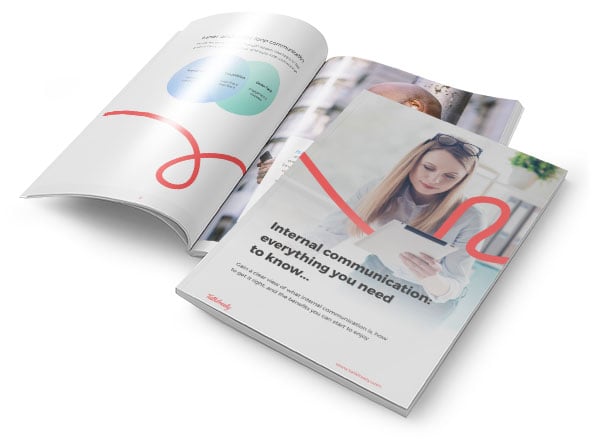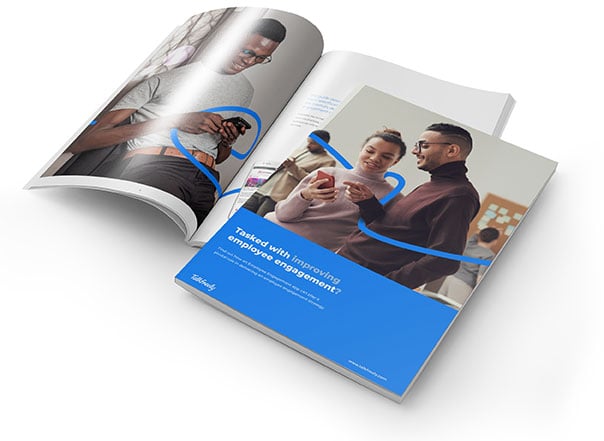It’s not what you say, but how you say it. This is especially true when it comes to Internal Communications. You can have the best, most transformative ideas and content to send out across your company. But, without the right vehicle to broadcast them, they won’t have the impact you’re hoping for. If you can’t deliver your internal communication ideas in a way that connects with people and relates to them in a meaningful way, you won’t get results.
It’s important to carefully consider the channel you’re using to broadcast your internal communications. Is it reaching your workforce? Is it engaging with them? And how do you know if it’s really working? Whether you’re relying on a single internal communications platform or utilising a broad range of tools to help you reach across the company, you need to know that your messages are getting through. As ways of working change and your workforce adapts, your internal communication needs will continue to evolve.
So, what features are you looking for in the ideal internal communication platform? We take a closer look at the essential elements that internal communications platforms need to offer to the modern workforce.
#1 It needs to reach everyone
Look for a platform that communicates seamlessly across the entire company
Why?
Now, more than ever, organisations struggle to connect with their employees. The inability to communicate with workers is a very real problem that is only exacerbated by remote working and flexible arrangements. Effective communication in the workplace relies on your capacity to reach every employee, regardless of location. Your internal communications platform needs to deliver 100% reach. It needs to reach across boundaries, connecting with desk-based and customer-facing workers, those working in warehouses, on production lines, at home or on the road.
How?
You’re looking for an internal communications platform that works effortlessly across all technology and operating systems. It shouldn’t matter which device, app or system your employees prefer to use. Or whether they’re working on IOS, Android or Safari. Your internal communication methods need to break down all barriers. An internal communications app neatly spans these bridges by providing a mobile solution that places your workplace in your employee’s pockets. When you offer a choice and allow your employees to choose their favourite means of communication, you’ll find the barriers disappear.
#2 It needs to work in real-time
Implement a platform that offers instant messaging and push notifications
Why?
Company culture has changed, and our expectations have changed with it. Information needs to be instantly available. It’s no longer acceptable to expect employees to search for updates in their own time or to have unread emails sitting in inboxes. Internal communication trends are showing a new demand for immediacy. Your internal communications platform now needs to be proactive, with the capabilities to deliver in the moment. Every internal communication strategy should cover high priority messaging and ensure there is a channel in place that instantly delivers.
How?
The answer is real-time communication. Look for an internal communication platform that offers push notifications and instant messaging options. Internal communications tools now need to reach everyone simultaneously; any time, any place, anywhere. It’s not just enough to fire instant messages out either. Sometimes, you’ll need to target your information to specific groups rather than addressing the entire company. The optimal system will allow you to manage teams and create dedicated groups. Ultimately, real-time messaging will give you the power to reach your workers when it really matters.
#3 It needs to encourage employee interaction
Look for a two-way feedback channel that gives employees a voice
Why?
For internal communications to be truly effective, you need to give employees an opportunity to be heard. Internal communications best practice dictates that it needs to be a two-way street. All too often, leaders use their channels as a way of delivering commands from above, without providing any facility for employees to speak out. Internal communication channels should both deliver and receive information, in a freely flowing two-way process. If you want employees to truly engage with your messaging, you need to give them a chance to comment and discuss.
How?
You need an internal communication platform that invites opinions and acknowledges feedback from your employees. Does it provide an opportunity to ask questions, leave comments, discuss ideas and collaborate with colleagues? An internal communications app has these systems and procedures built-in and ready to go. It will also offer an all-important social platform for company discussions, where employees can meet, chat and share knowledge, along with social tools to share and celebrate achievements.
#4 It needs to be easy to manage
An internal communication platform that’s simple to keep up-to-date
Why?
Many internal communication platforms and intranets are allowed to become obsolete. Unless regular updates have been scheduled, they quickly become neglected file depositories without governance or accountability. The benefits of internal communication are only truly felt if it is a trusted source of content. Once information falls out of date, you run the risk of employees using inaccurate data, and losing faith in the system. An easy-to-use system that is well-managed will ensure your internal communications platform becomes an essential element of the digital workplace.
How?
Rather than trying to handle multiple channels and information streams, many companies find the issue is solved by bringing everything together in one platform. An employee app, designed specifically with a user-friendly interface, will eliminate many update problems. It will help you schedule updates and maintenance into your internal communications plan, and ensure you’re delivering up-to-the-minute information that’s consistently relevant.
#5 It needs to offer personalised content
Opt for platforms that can tailor content to the individual
Why?
When it comes to internal communication platforms, you want to look beyond the one-size-fits-all approach. Not all information will be relevant to every employee. Beyond that, companies are beginning to recognise that individuals have very different work styles. What works for one employee won’t deliver for another. If you’re looking at ways to improve internal communication, a personalised approach will have an immediate impact.
How?
An internal communication platform that customises content will prove enormously beneficial to engagement levels. Look for options to tailor homepages and newsfeeds according to user groups. This will ensure workers receive 100% relevant information. In addition, aim to keep communications relevant by filtering content and using video and podcasts to create a more diverse experience. An internal communications app will also allow individuals to use their favourite device, further boosting engagement.
#6 It needs to measure impact
Select a platform that actively monitors engagement levels
Why?
Unless you track the impact of your internal communications, you won’t know if they have the desired result. It isn’t just enough to see that your messages have been received either. Are they also understood? Are people acting on them? By tracking engagement levels and resulting activity, you’ll have a much clearer picture of your success. Internal communication metrics are an essential element of any modern platform.
How?
Improving internal communications begins with understanding. You’re looking for an internal communications platform that offers integrated monitoring and reporting tools. Choose software that lets you download reports and logs for external analysis and company reports. Gather a constant stream of feedback from your workforce by scheduling regular pulses and polls. Once you have the complete picture, you’ll be able to tweak and adjust your approach until you have achieved maximum impact.









